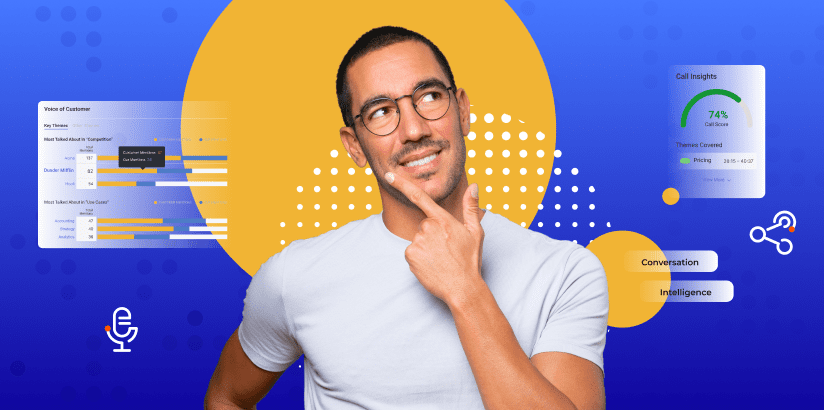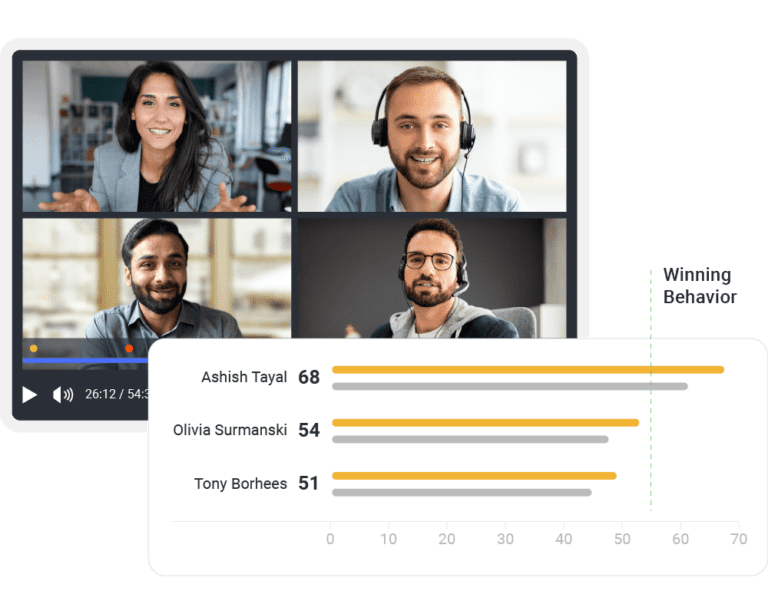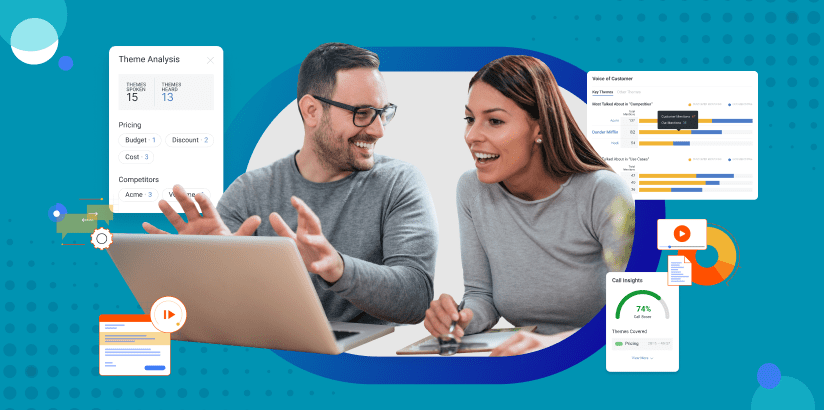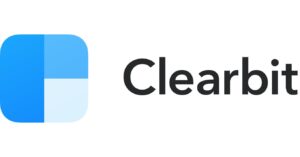Your Guide to Sales Analytics + The Best Sales Analytics Tools for 2024
![]() Lindsey Plocek
on
January 18, 2024
Lindsey Plocek
on
January 18, 2024
Imagine asking a room full of sales leaders what their top two priorities are for the coming year. Chances are, every single person in that room would cite growing revenue and improving sales team performance as top priorities.
Sales analytics is critical to achieving those goals.
The good news is, you don’t have to be a statistics wiz to benefit from sales analytics. With a bit of knowledge – and the right tools – you’ll be well-equipped to leverage sales analytics to improve seller performance and grow revenue.
In this post, we’ll answer the question, “What is sales analytics?” We’ll also explore how sales analytics benefits sales teams and which sales analytics metrics are most important to track. We’ll close out by sharing some of the top sales analytics software options available to sales organizations.
What is sales analytics?
First off, what is sales analytics?
According to Gartner, sales analytics is “used in identifying, modeling, understanding and predicting sales trends and outcomes while aiding sales management in understanding where salespeople can improve.”
Let’s break that down.
Sales analytics describes the process of gathering, analyzing, and interpreting sales data. These insights can be leveraged to optimize strategies, make data-based decisions, and plan for the future.
For example, sales leaders leverage sales analytics to determine goals, optimize processes, and more accurately forecast future sales.
In addition, they help sales managers and sales enablement teams to better understand seller performance. Then, they can deliver personalized training and coaching to strengthen weak areas and improve sales performance. They can also measure the impact of those initiatives.
Four types of sales analytics
There are a few different types of sales analytics:
Describes what has happened. For example, you can see how much revenue was generated during the fourth quarter of 2023 – or how a particular sales rep performed during that same period.
Examines data to determine the “why” behind what happened.
Takes what’s happened in the past, looks for patterns, and makes predictions about what will happen in the future.
Takes the data that’s available and recommends the best course of action based on that data.
The benefits of sales analytics
Sales analytics can have a significant, positive impact on countless factors that contribute to sales success. Let’s take a look at a few.
Revenue growth
Shorter sales cycles
Training + enablement
Seller performance
Sales planning
Customer experiences
Marketing impact
Revenue growth
By understanding seller performance, you’re better equipped to improve it. When sellers close more deals, your revenue will grow.
Sales cycle
The shorter the sales cycle, the faster you can generate revenue. As such, many organizations are focused on how they can optimize the sales cycle to accelerate sales.
Sales analytics enables teams to understand how customers progress through the sales cycle – and how long it takes them to do so. Teams can identify problem areas. For example, there may be a particular stage of the sales cycle where prospects often drop off. Then, teams can make data-based optimizations to streamline (and shorten) the sales cycle.
They also enable teams to understand how customers progress through the sales cycle – and how long it takes them to do so. Teams can identify problem areas. For example, there may be a particular stage of the sales cycle where prospects often drop off. Then, teams can make data-based optimizations to streamline (and shorten) the sales cycle.
Sales training and enablement
Sales onboarding sets sellers up for success at the organization. Ongoing training and enablement ensures they are always ready to sell.
Sales analytics can inform more effective training and enablement. With sales analytics, teams can better understand how (or whether) training and enablement initiatives are impacting sales outcomes. They can use these insights to optimize programs to drive impact.
Seller performance
Sales reps need to master a certain set of skills and competencies to be successful in the field. Sales analytics can help sales leaders understand the strengths and weaknesses of each seller. Then, they can deliver training and coaching to strengthen skills and improve performance. Finally, they can measure the impact of their training and coaching efforts and optimize accordingly.
Sales planning
In the world of sales, planning is key. Planning must be based on data – rather than hunches.
The right revenue intelligence enables sales leaders to more accurately forecast sales. In addition, sales analytics enables sales leaders to make other, data-based planning decisions – such as adding headcount or realigning sales territories.
Customer experiences
In today’s world, experiences matter as much as products and services. But one-size-fits all experiences won’t cut it. According to Salesforce research, 78% of business buyers expect companies to adapt to their changing needs and preferences.
According to Salesforce research
With sales analytics, you can better understand customers’ needs and behaviors. Then, you can create sales processes that address those needs and behaviors. Customers will have better experiences – which will increase their likelihood of making a purchase.
Marketing impact
Marketing teams spend plenty of time developing campaigns and initiatives to attract prospective customers. It’s important to measure the impact of those efforts.
Sales analytics can shed light on the effectiveness of marketing initiatives. Then, the team can optimize their efforts to improve performance.
For example, a marketing campaign may generate a high volume of leads. But with sales analytics, you’re able to see that a majority of these leads drop off – usually because they aren’t a good fit for the company’s products or services. Marketing and sales can leverage these insights to create campaigns that more effectively target good-fit prospects.
11 key sales analytics metrics revenue organizations need to track
Data is foundational to sales analytics. As such, it’s important to track the right key performance indicators (KPIs). It’s also important to understand why you’re tracking those metrics.
What metrics should you track to fuel your sales analytics? It varies from company to company. However, there are some KPIs that are important for just about any company to track. Let’s take a closer look at a few.
Revenue is perhaps the most obvious metric to track. You can track the total amount of revenue for a specified period of time – such as a month or a quarter
Of course, it’s important to track how much revenue your organization is generating. It’s also important to measure how much your revenue increases or decreases over a given period of time. For example, you may measure growth year-over-year or quarter-over-quarter.
You likely track sales overall. If you have multiple offerings, it’s also important to track sales by product or service.
That way, you’ll understand how specific products are performing. Then, you can make decisions to optimize your product mix.
Your conversion rate is the portion of prospects that end up making a purchase. A low conversion rate may indicate a problem (or problems), but it’s important to dig deeper.
For example, it’s easy to assume a low conversion rate is due to the ineffectiveness of sellers. But it could also be due to the fact that sellers are often interacting with leads that aren’t a good fit for what they’re selling.
This is a measure of how long it takes for buyers to move through the sales cycle – from initial contact to close. It’s a good idea to measure the average sales cycle duration across the entire team. However, it’s important to remember that this incorporates data from your very best sellers – as well as your very worst. As such, it’s also a good idea to calculate the average sales cycle duration for your top sellers.
This is a measure of how much it costs to acquire a new customer. It’s calculated by taking the total cost of sales and marketing for a specified period (for example, a quarter or a month), and then dividing it by the number of new customers that converted during that same time period.
If CAC is high, look for opportunities to optimize your sales and marketing efforts.
Average deal size is a measure of the value of sales. You can calculate your average deal size by dividing total revenue by total number of deals for a given period.
This metric provides valuable insight you can leverage to improve sales performance. For example, if you notice deal size decreasing, it’s time to dig deeper. Perhaps you have an influx of newer sales reps – and they struggle to convert larger deals. By addressing this challenge, you can start to increase average deal size – and overall sales.
Customer churn rate is the percentage of customers who stop doing business with you during a specified time period. For example, let’s say you have a 10% customer churn rate for 2023. 10% of your customers have stopped doing business with you – while 90% have stuck around.
High customer churn is problematic. It’s important to examine the reasons customers churn – and then work to address them.
In addition to measuring the aforementioned KPIS across the entire organization, many should also be measured by team. For example, a sales organization based in the United States may measure sales performance based on territory. A global sales organization may measure sales performance based on country.
Measuring performance by team can provide a lot of valuable insights. For example, you can see which areas your products and services are resonating most. You may also uncover a need to deliver additional training and coaching to sales reps in specific regions.
It’s important to track company and team sales. However, it’s also important to drill down even further to measure sales performance for each of your individual sales reps.
Rep performance can be measured for a specific time period, such as monthly or quarterly. For example, you might measure both the number of closed deals – as well as the total value of those deals – for each agent in January 2024.
Individual rep performance data can shed light on the need for additional training and coaching for a specific rep. It can also provide insights on who may be eligible for a promotion or other reward.
Sales training and sales enablement help ensure sales reps always have the skills and information they need to be successful. It’s important to track completion metrics for sales training and enablement efforts.
However, it’s even more important to track the impact of your sales training and enablement efforts. For example, is a seller actually using the skills they learned in training when they’re out in the field? Conversation intelligence tools can help you determine if that’s the case.
Or, did a particular training module have a positive impact on deal outcomes?
With these insights, you can optimize your efforts. Then, your optimized sales training and enablement initiatives will more effectively prepare your sellers for success in the field.
5 top sales analytics tools
Sales analytics is a key ingredient to improve sales performance and growing revenue. But for many people, it can be overwhelming.
There are many types of data coming in from different directions. It can be challenging to streamline this data, analyze it, and determine what actions to take based on it.
The good news is, it doesn’t have to be overwhelming. The right sales analytics tools will do the heavy lifting for you.
There are many sales analytics tools in the market today. But they’re not all the same. It’s important to find the sales analytics tools that fit the needs and goals of your business. When weighing your options, you’ll need to consider factors including data requirements, integrations, visualizations, use of use, and cost – among others.
There’s no single sales analytics tool that’s the right fit for every need and business. However, there are some top sales analytics tools.
Mindtickle
Sales enablement is essential to sales success. It’s important to measure and analyze sales enablement effectiveness on an ongoing basis.
Mindtickle’s revenue productivity platform incorporates robust sales enablement analytics. Of course, you can measure usage data. However, Mindtickle goes beyond usage data to help you understand how training and enablement programs are actually impacting sales team performance. Then, you can use these analytics to optimize your sales enablement programs and prioritize initiatives that are proven to improve outcomes.
Other sales analytics tools
Some other top sales analytics platforms include:
Hubspot’s platform provides sales leaders with the sales analytics they need to make strategic decisions. Users can access insights related to pipeline, performance, deal status, conversion, and other key areas.
The platform incorporates a feature that allows sales leaders to not only understand the data – but also the reasons behind the data. Then, they can use these insights to make optimizations.
Clari brings key sales data from the past, present, and future into a single platform. These insights can help teams improve performance and accurately predict future revenue.
Gong equips sales teams with sales analytics about what’s working and what’s not. Those analytics inform recommendations that can help sales reps close more deals.
Leverage sales analytics to improve your sales process
Sales performance and revenue growth are top priorities for every sales team. Sales analytics is key to achieving these goals.
The right sales analytics tools enable revenue organizations to understand what’s happening, why it’s happening, and what they can do to improve outcomes. These insights empower sales leaders to optimize strategies and make data-based decisions that grow revenue.
Sales enablement is essential to getting your reps ready to sell. But it’s important to have the right sales enablement analytics to optimize your program.
Sales Analytics in Mindtickle
Ready to see how Mindtickle delivers the sales enablement analytics you need to increase the impact of your program?
Get a Demo
























